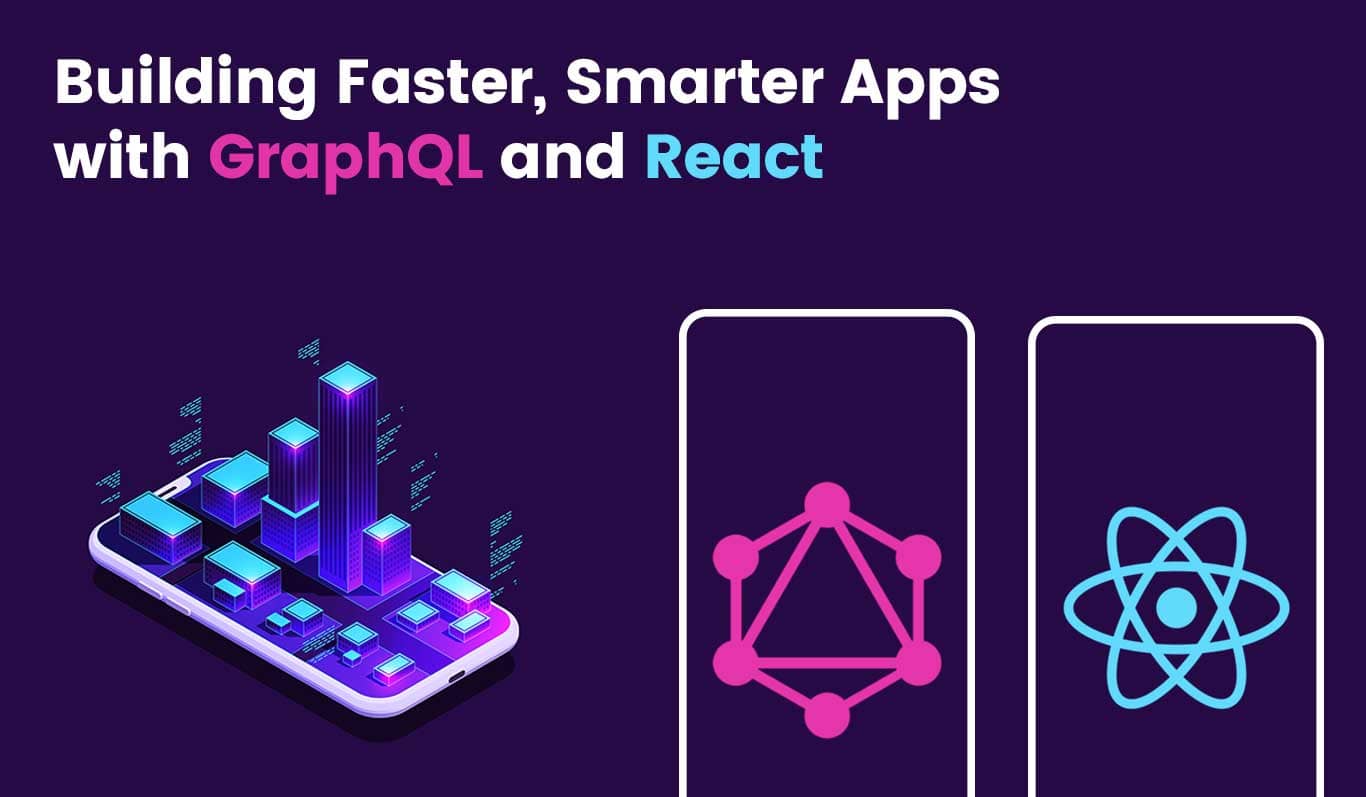Building Faster, Smarter Apps with GraphQL and React

In today's tech environment, staying ahead of the curve is crucial, and that's where GraphQL + React Native combo come in.
As two of the most popular technologies in the app development world, they're the perfect pair to help you build apps that deliver a superior user experience.
In this guide, we'll dive into the benefits of using GraphQL in React, including improved performance, real-time data retrieval, and easier maintenance. So, strap in, and get ready to take your app development game to the next level!
Definition of GraphQL
GraphQL is like a magic wand for your app development process. With a wave of this wand, you can easily fetch exactly the data you need and say goodbye to over-fetching or under-fetching data. It's a language that communicates between the client and the server, making sure that both parties are on the same page and getting what they want.
Imagine GraphQL as a super-smart waiter at your favorite restaurant. Instead of having to guess what you want and bringing you a plate full of food you don't need, the waiter/GraphQL asks you exactly what you want and only delivers that to you. And because it's so efficient, you can get your data faster, so you can get back to doing what you do best - enjoying your app.
Benefits of Using GraphQL in React Native Development
You're a mobile app developer tasked with building a beautiful, high-performing app for both iOS and Android. And because you're smart, you choose to use React Native. But hold on a second, have you heard about GraphQL?
Think of GraphQL as a superhero for your app development process. It'll swoop in and save the day by making your life easier, your code better, and your users happier.
Let's dive into why GraphQL is the perfect sidekick for your React Native journey.
Reduced Overhead and Improved Performance
With REST APIs, you often get a whole bunch of data you don't need, kind of like ordering a large pizza and only eating one slice. With GraphQL, you only get what you ask for, saving time and speeding up your app like a cheetah on caffeine.
Strong Typing and Improved Code Quality
GraphQL is all about making your code better and catching errors early. Think of it as a personal editor, checking your work and making suggestions before you hit publish. And because it's a great communicator, GraphQL provides clear documentation so everyone on your team is on the same page.
Better User Experiences
With GraphQL on your side, your users will be giddy with joy. GraphQL makes it easy to add new features, you can continue to improve your app and keep your users coming back for more.
Real-Time Data Retrieval
Say goodbye to slow-loading apps and hello to real-time data retrieval! With GraphQL, you can fetch exactly what data you need, when you need it. This means that your app can be lightning fast and provide users with up-to-date information at their fingertips.
Easier Maintenance
Tired of spending hours fixing bugs and making updates to your codebase? GraphQL is here to make your life easier! Its schema-driven approach means that you can make changes to your data structure without affecting the rest of your code. It's like having a personal janitor that keeps your codebase clean and organized, freeing you up to focus on what really matters: building amazing apps!
How to Set Up GraphQL in a React Native App?
Set up a GraphQL server: You can use a variety of tools to set up a GraphQL server, such as Apollo Server or Graphcool. This will serve as the backend for your React Native app.
Here's how to set up a GraphQL server with Apollo Server in React Native:
var { graphql, buildSchema } = require('graphql');
var schema = buildSchema(`
type Query {
hello: String
}
`);
var rootValue = { hello: () => 'Hello world!' };
var source = '{ hello }';
graphql({ schema, source, rootValue }).then((response) => {
console.log(response);
});
It sets up the basic structure of a GraphQL server. The typeDefs and resolvers variables need to be replaced with your own schemas and resolvers.
You can integrate GraphQL with your React Native app using Apollo Client like this:
import { ApolloServer } from '@apollo/server';
import { startStandaloneServer } from '@apollo/server/standalone';
const server = new ApolloServer({
typeDefs,
resolvers,
});
const { url } = await startStandaloneServer(server);
console.log(`🚀 Server ready at ${url}`);
Using HTTP, this connects the Apollo Client to your GraphQL server. The uri parameter needs to be replaced with the GraphQL server's URL.
After setting up a GraphQL server and integrating it with your React Native app, the following steps need to be completed in order to fully utilize the GraphQL API:
Define your schema: This involves specifying the data types, relationships between data types, and the operations that can be performed on the data.
Write resolvers: These functions connect the schema to the actual data stored in the database and determine how data is retrieved and updated.
Implement GraphQL queries and mutations: This involves defining the data that you want to retrieve or update in your app.
Test your implementation: Make sure everything is working as expected by running tests on your GraphQL server and React Native app.
Conclusion
GraphQL is the Robin to your Batman (or Wonder Woman, if that's more your style) in the world of React Native app development. With faster performance, better code, flexible ease, and improved user experiences, why wouldn't you want to make GraphQL part of your team? So, what are you waiting for? Embrace the power of GraphQL and let the app-building adventures begin!!!
Request a Quote
Categories
Popular posts
Best Practices for Software Product Engineering Every CTO Should Implement
2023-14-18How to Build Your Own On-Demand Carpooling App Services?
2023-08-25How to Start an On-Demand Fuel Delivery Business: A Comprehensive Guide
2023-07-28Empowering Miners: How Fleet Management Apps are Transforming the Mining Industry?
2023-07-21A Complete Guide to Develop a Food Delivery App for Restaurants in 2023
2023-07-08Mobile Apps Transforming the Travel Industry: A Game-Changer in Travel Planning and Experience
2023-07-07
